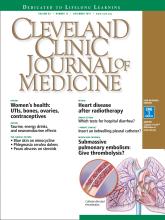ABSTRACT
Taurine is an amino acid found abundantly in brain, retina, heart, and reproductive organ cells, as well as in meat and seafood. But it is also a major ingredient in popular "energy drinks," which thus constitute a major source of taurine supplementation. Unfortunately, little is known about taurine’s neuroendocrine effects. The authors review the sparse data and provide a basic background on the structure, synthesis, distribution, metabolism, mechanisms, effects, safety, and currently proposed therapeutic targets of taurine.
- Copyright © 2016 The Cleveland Clinic Foundation. All Rights Reserved.
- Jonathan J. Caine, MD⇑
- Department of Psychiatry and Behavioral Neurosciences, University of Cincinnati College of Medicine
- Department of Veterans Affairs Medical Center, Cincinnati, OH
- ADDRESS:
Jonathan J. Caine, MD, University of Cincinnati Medical Center, Department of Psychiatry and Behavioral Neurosciences, PO Box 670559, Cincinnati, OH 45219-0559; cainejj{at}mail.uc.edu
- Thomas D. Geracioti, MD
ABSTRACT
Taurine is an amino acid found abundantly in brain, retina, heart, and reproductive organ cells, as well as in meat and seafood. But it is also a major ingredient in popular "energy drinks," which thus constitute a major source of taurine supplementation. Unfortunately, little is known about taurine’s neuroendocrine effects. The authors review the sparse data and provide a basic background on the structure, synthesis, distribution, metabolism, mechanisms, effects, safety, and currently proposed therapeutic targets of taurine.
- Copyright © 2016 The Cleveland Clinic Foundation. All Rights Reserved.






